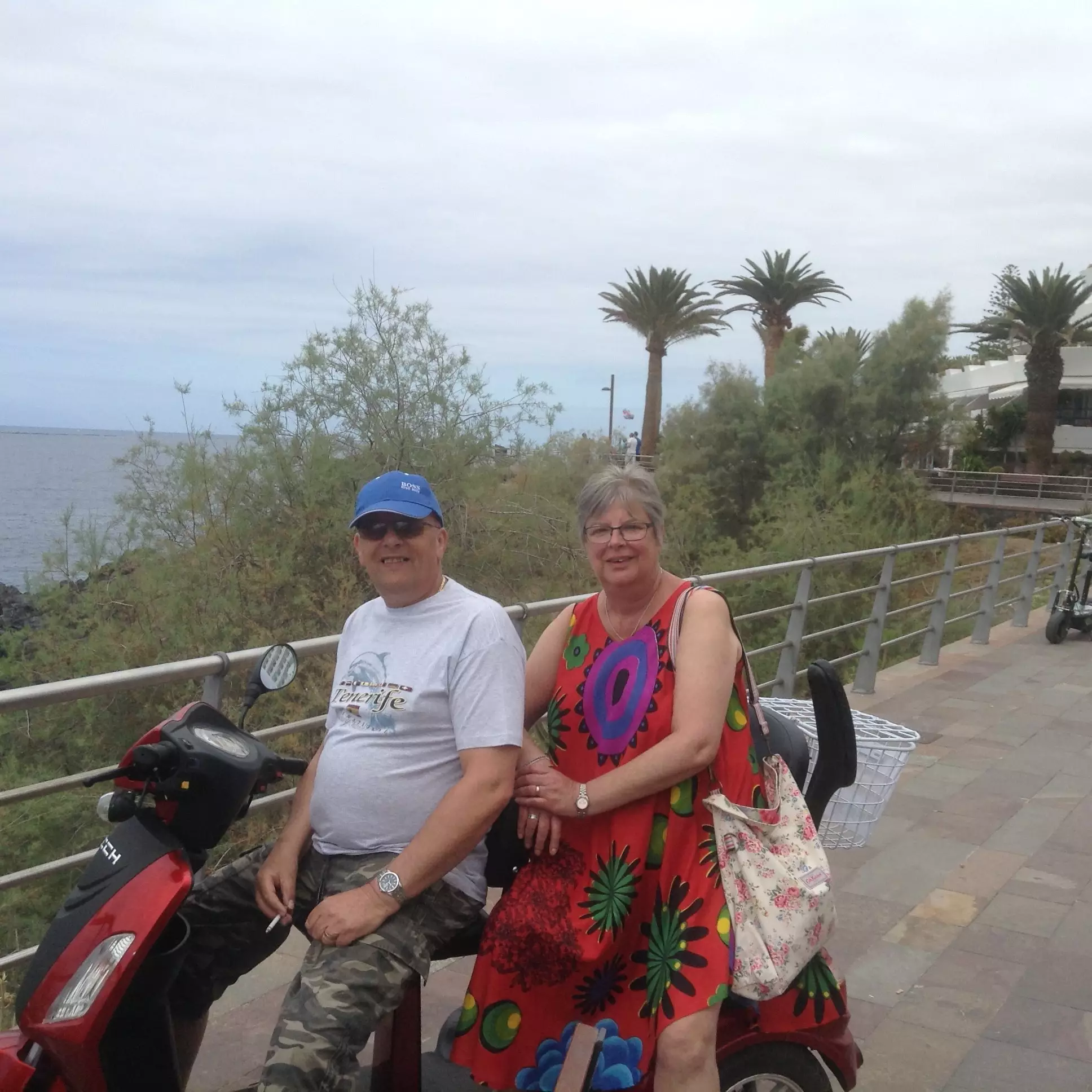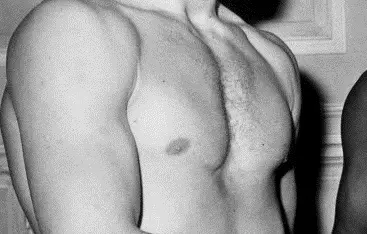
Breast cancer is a women's issue, right? Wrong. It's a common misconception, but yes, men can get it to.
Yesterday was National Cleavage Day, and whereas many a man maybe appreciating breasts of a different nature, maybe it's time to look at his own.
This widely under-reported cancer in men is one that needs awareness - Roy Collins is a man spearheading that campaign.
Only 350 men per year are diagnosed with breast cancer, however with such small figures are we even aware of it?
"It doesn't hurt. Cancer doesn't hurt," Roy tells LADbible. "Until it's too late. I would never have felt my own breast to check if I've got cancer."

Roy has a lot to thank his wife Theresa for.
Advert
It's something that is supported by Eluned Hughes, head of public health and information at Breast Cancer Now.
"It's not very well known because it is rare," she says. "There's only 350 diagnosis per year. The chances of a man getting breast cancer is one in 800."
"Breast cancer is seen as a female disease, men don't think of themselves having breast tissue."
Now aged 61, Roy was diagnosed with breast cancer in 2011. His was noticed by his wife, Theresa (thankfully, she's a nurse), who saw that his nipple was inverted one day when stepping out the shower. After a feel, she told him to get it checked straight away.
"I'm like any bloke," Roy says. "The only time I look in the mirror is to check my tie is straight. I get in the shower, get out and get dressed. I certainly wouldn't have got it checked without Theresa."
After going to the doctors, Roy was referred to a consultant, where an "uncomfortable" mammogram and a biopsy followed. This confirmed the fears of cancer, a malignant growth, 6cm in size.
Roy says there was no choice than to have a mastectomy of the right breast and remove lymph nodes from the right arm where the cancer had travelled too.
18 weeks of chemotherapy, three of radiotherapy and then five years of Tamoxifen tablets have now seen Roy make a full recovery.
The causes are still unsure, although experts link it mostly to family history and weight.
Hughes, says men need to know their bodies.
"Men have less breast tissue, yes, but they have some," she tells LADbible. "It's common behind the nipple. Lumps appear nearer the nipple, there's a change in appearance, a lump behind it or maybe discharge.
"Family history is a big one, but also hormonal changes. Men still produce oestrogen - something that can cause imbalances in inherited conditions, or some lifestyle factors like obesity.
"For most men, it's not going to be anything to worry about. But it's important to get it checked out. There's an increased risk if there's a female family history of breast cancer."

Check yourself - men can get breast cancer. Credit: PA
Advert
Roy links his to his mother's ovarian cancer - with breast and ovarian cancers being closely connected.
However, at first, he linked it to an accident while playing football when he fell heavily on his chest. Such causes are not likely to be connected, although trauma sometimes can be a cause of cancers.
Now, the 61-year-old wants men to be unashamed of admitting they've got the disease.
"It was a slight shock at first," he explains. "Like most men, I wouldn't have even thought it.
"But since doing all my talks and documentaries, a lot of men have come to me and said they didn't even think they could get it.
"Many breast charities don't even acknowledge men, but that's changing."
Roy highlights one charity, the 1066 Pink Ladies Club in Hastings, Kent. They've put his story up on their website and are now working with more men.
The chances are survival are largely positive. Mortality rates have dropped by 60% since 1971 up to 2014 and are decreasing further.
Hughes explains: "There's increased awareness and better treatments. New treatments and targeted treatments that have reduced side-effects."
Breast Cancer Now are currently studying 1,000 men with breast cancer and comparing them. They are looking at what differences there are in genetics and their environment.
A big breakthrough has already occurred. A gene known as Rad51B. A single change in this gene can increase chances of male breast cancer by 50%.

Roy now leads a normal life
Advert
And Lads, you may think you're OK for now, but what about your dad and granddad? Maybe it's time males opened up and started talking. That's Roy's main target.
"If I can make an impact to one man then that's enough. Get to it, before it gets to you," he says.
"If you get it early, you can avoid the unpleasantries of chemo and radiotherapy. You can avoid being totally knackered for six months. Just do what you need to get rid of it.
"If you think there's something there, run on down to the GP."
Hughes echoes Roy on the matter: "My message would be to be aware that breast cancer is a possibility for men. Look after yourself and don't be afraid to get it checked out."
On Friday, Roy celebrates a landmark. After five years on Tamoxifen he will take his last pills and go back to a cancer-free, medication-free life.
Featured Image Credit: PA